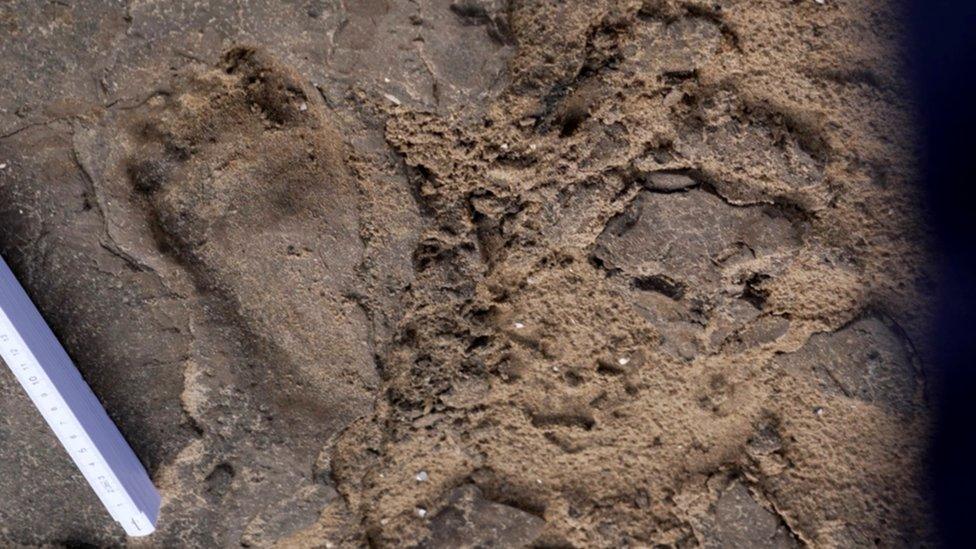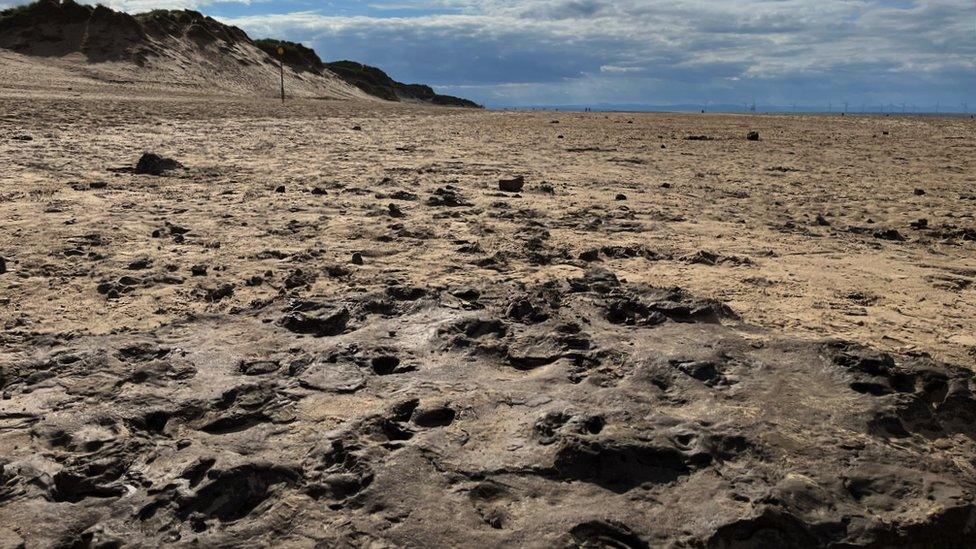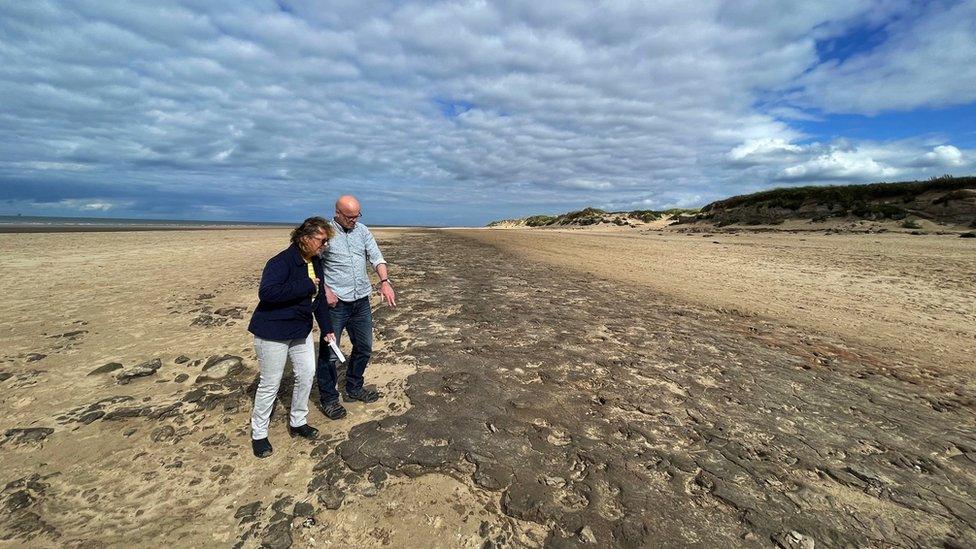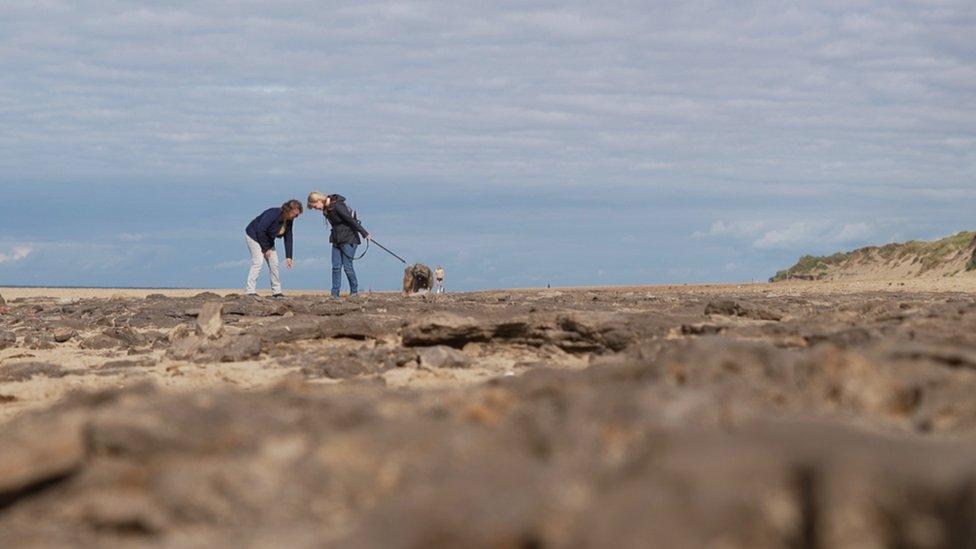9,000-year-old human footprints found on Formby Beach!
- Published
- comments

Can you see the footprint? Researchers think it was over 8,500 years old!
Scientists looking at footprints in the sand on Formby Beach, in Liverpool, have discovered they date back to 9,000 years ago!
There's a huge range of human footprints, the most recent from medieval times, going back around 1,000 years.
Scientists use a special method called 'carbon dating' to work out how old the footprints are.
As well as human footprints, they also found evidence of deer, wolves and lynx that used to live along the coastline.
'Teeming with animals'

Scientists have found layers and layers of prints in the mud on Formby Beach
It's all part of research from the University of Manchester, who are trying to look at the history of the area, and work out what the western coastline used to be like.
Professor Jamie Woodward says that the beach used to be "teeming with animals" about 6,000 years ago.
They worked out that around 5,500 years ago, the landscape began to transform as the sea level rose, which drove out certain animals.
They also found that more human footprints began to appear from this point - which made them think humans farming might have driven animals out as well.
The remaining animal prints - which were from a similar time to human ones - were mainly deer and wolves.
'Teenager' walking barefoot

Researchers use special methods to accurately date when they think the footprints were made
As well as looking at what animals were around at the same time as humans, through looking at the footprints they can find out more about the people that left them!
Dr Alison Burns pointed out an 8,500-year-old human footprint that, due to the size, looks like it came from a teenager or a young man.
She could see a mark in the print that suggested the young man had a bunion - a bump in his toe.
She says this was formed because people used to walk around barefoot.
When this young man sat down, his little toe must have rubbed on the ground, causing the bump in his toe.
Biodiversity hotspot

Formby Beach is full of historical evidence, hidden in the mud!
By looking at these footprints and animal prints, scientists hope they can discover more about the history of what they call "biodiversity hotspots".
A biodiversity hotspot is an area which has had a range of animals and plants, that could be a risk due to the impact of humans.
This could include humans farming or living in the area, or larger issues like climate change and pollution.
They're often in coastal areas - such as Formby Beach.
By looking at how areas used to adapt - they hope they can find out more about how areas cope when faced with difficult changes, like rising sea levels or a changing landscape.
- Published1 October 2022

- Published3 October 2022

